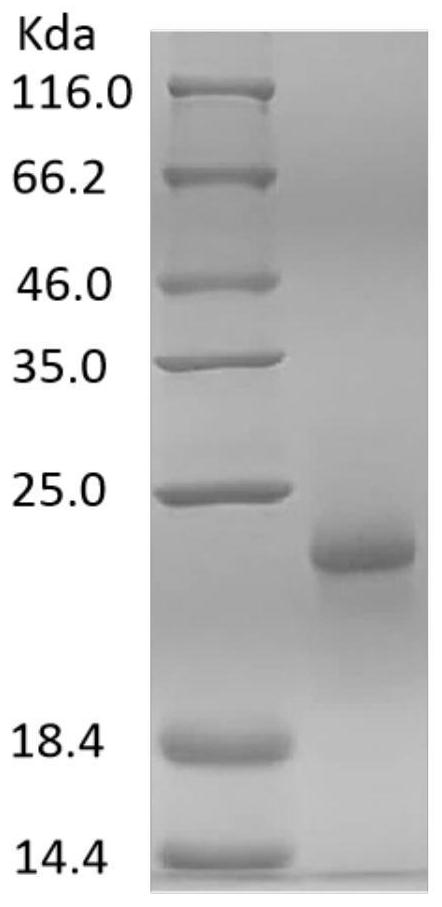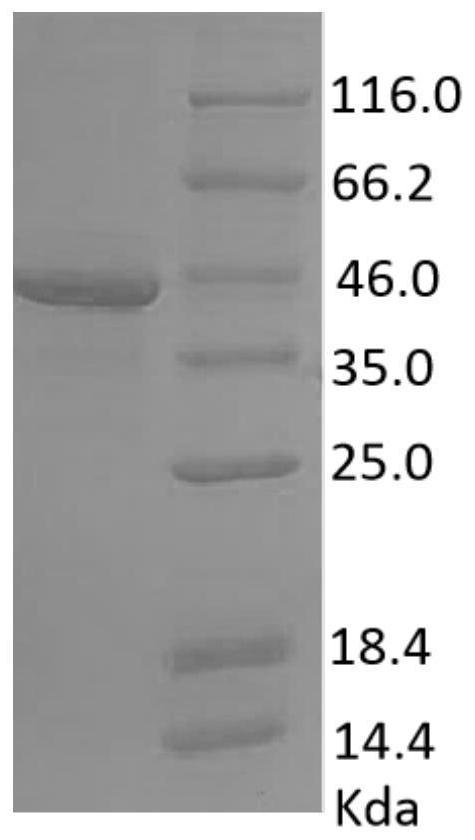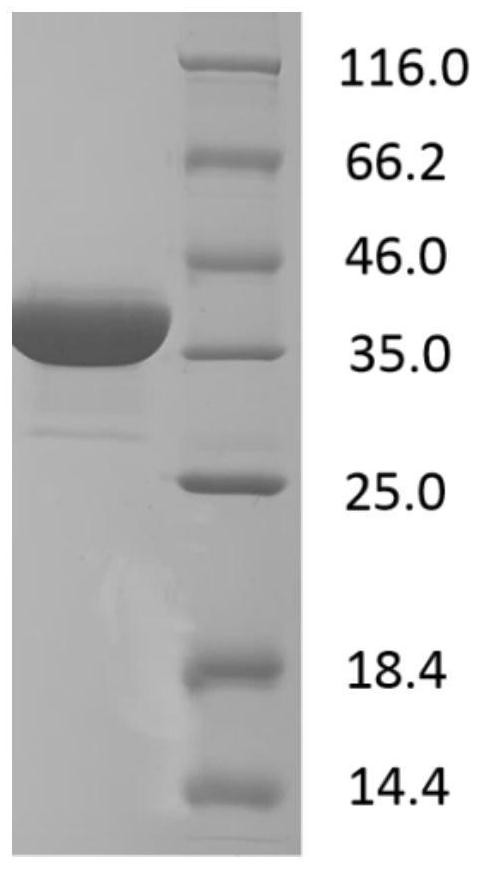DNA sequences encoding African swine fever virus antigens, compositions of antigens encoded by them and their application in immunological detection
An African swine fever virus, immunological detection technology, applied in the application field of immunological detection methods, can solve the problems of many false negatives, low expression, low accuracy, etc., and achieve the effect of high sensitivity
- Summary
- Abstract
- Description
- Claims
- Application Information
AI Technical Summary
Problems solved by technology
Method used
Image
Examples
Embodiment 1
[0061] Embodiment 1. Construction of the expression system of African swine fever virus antigen
[0062] According to the conventional technical methods in this field, the DNA sequences SEQ ID No.7, 8, 9, 10, 8, 9, 10, 11 or 12 are respectively added with appropriate restriction sites by primers, and connected to the vector through the restriction sites. Subsequently, the vector added with the target DNA sequence is reintroduced into the corresponding host cells, thereby constructing an expression system for expressing the above-mentioned protein. Examples of combinations of vectors, host cells, expression tags, purification tags and restriction sites specifically used in the present invention are shown in Table 1 below.
[0063] Table 1. Examples of combinations of vectors, host cells, expression tags, purification tags, and restriction sites
[0064] carrier name host cell expression tag Purification label Restriction sites pET-28a E. Coli N-term...
Embodiment 2
[0066] Example 2. Expression and purification of African swine fever virus antigen in prokaryotic expression system
[0067] 1. Experimental plan:
[0068] 1) The prokaryotic expression system constructed in Example 1, that is, Escherichia coli (E. Coli), was revived, inoculated with corresponding resistant LB medium, and cultured on a shaker at 37° C. and 200 rpm for 12-16 hours.
[0069] 2) Inoculate the recovered bacterial solution into the corresponding resistant TB medium at a ratio of 100:1, and culture on a shaker at 37°C and 200rpm for 3-4h.
[0070] 3) When culturing for 3-4 hours and the bacterial concentration OD600 = 0.6-1.0, add isopropyl-β-D-thiogalactopyranoside (IPTG) to a final concentration of 1 mM. Then culture at 37° C. and 200 rpm on a shaker for 4-6 hours (ie induction for 4-6 hours).
[0071] 4) After the induction is completed, centrifuge at 4° C. and 8000 rpm for 10 minutes to collect the bacteria.
[0072] 5) The bacterial cells were resuspended an...
Embodiment 3
[0086] Example 3. Expression and purification of African swine fever virus antigen in 293 cells
[0087] 1. Experimental plan:
[0088] 1) On the day before transfection, take 293 cells in the logarithmic growth phase and press 0.8×10 6 cells / mL density for passage.
[0089] 2) Prepare 2 sterile EP tubes, add 200 μL cell serum-free medium to each, then add 20 μg expression vector DNA containing the target gene (see Example 1) and 60 μL PEI transfection reagent, mix well and incubate at room temperature for 5 minutes.
[0090] 3) Quickly add the PEI transfection reagent dilution to the expression vector DNA dilution containing the target gene, mix gently with a pipette gun, and incubate at room temperature for 15-20 minutes.
[0091] 4) The mixture of the expression vector DNA containing the target gene and the transfection reagent PEI is quickly added to the cell suspension.
[0092] 5) When the cell viability drops to about 60%, the cell supernatant is collected by centrif...
PUM
 Login to View More
Login to View More Abstract
Description
Claims
Application Information
 Login to View More
Login to View More - R&D Engineer
- R&D Manager
- IP Professional
- Industry Leading Data Capabilities
- Powerful AI technology
- Patent DNA Extraction
Browse by: Latest US Patents, China's latest patents, Technical Efficacy Thesaurus, Application Domain, Technology Topic, Popular Technical Reports.
© 2024 PatSnap. All rights reserved.Legal|Privacy policy|Modern Slavery Act Transparency Statement|Sitemap|About US| Contact US: help@patsnap.com










